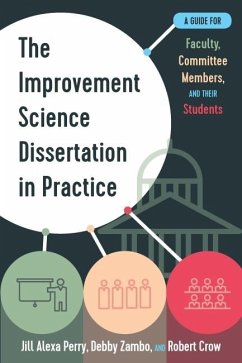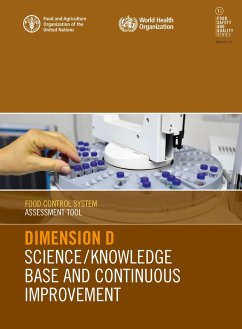
Role of Riparian Buffers in Water Quality Improvement (eBook, ePUB)
A Study of the Chattahoochee River Basin 1985-2010

PAYBACK Punkte
4 °P sammeln!
The Chattahoochee River Basin research in Georgia analyzed changes in water quality variables between 1985 and 2000 since the riparian buffers legislation was engaged in 1989. The Chattahoochee River itself is a nationally recognized drinking water supply for residents in the metropolitan Atlanta region. The four water quality variables investigated in the research were fecal coliform, dissolved oxygen, nitrites, and phosphorus. The water quality variable levels were compared to the drinking water quality standards developed by the Environmental Protection Agency (EPA). The impetus for studyin...
The Chattahoochee River Basin research in Georgia analyzed changes in water quality variables between 1985 and 2000 since the riparian buffers legislation was engaged in 1989. The Chattahoochee River itself is a nationally recognized drinking water supply for residents in the metropolitan Atlanta region. The four water quality variables investigated in the research were fecal coliform, dissolved oxygen, nitrites, and phosphorus. The water quality variable levels were compared to the drinking water quality standards developed by the Environmental Protection Agency (EPA). The impetus for studying the change in water quality variables is the state law called the Georgia Erosion and Sedimentation Act of 1975. The act was implemented in 1989 and requires a 25-foot riparian buffer to be set around all non-trout waters and a 50-foot buffer to be placed around all trout state waters within the state of Georgia.
The United States Geological Survey (USGS) initially gathered the samples used for the research. The research used twelve sampling stations that were placed throughout the Chattahoochee River Basin. The research hypothesis was that there would be a significant improvement in the water quality variable levels (decrease in phosphorus, nitrites and fecal coliform, and increase in dissolved oxygen) during the 15-year study period, with an emphasis on the change after 1989 due to the riparian buffers. The Student's T-Test and Mann Whitney U-Test were performed to test for a significant difference in water quality levels before 1989 and the levels after 1989. The results of the test showed that, as hypothesized, there was a statistically significant increase in dissolved oxygen, and a statistically significant decrease in phosphorus and fecal coliform levels after 1989. Furthermore, the research found a decrease in nitrites when comparing before and after riparian buffers were implemented, but the difference is not statistically significant. Water quality has significantly improved since implementation of riparian buffer legislation in Georgia in 1989.
The United States Geological Survey (USGS) initially gathered the samples used for the research. The research used twelve sampling stations that were placed throughout the Chattahoochee River Basin. The research hypothesis was that there would be a significant improvement in the water quality variable levels (decrease in phosphorus, nitrites and fecal coliform, and increase in dissolved oxygen) during the 15-year study period, with an emphasis on the change after 1989 due to the riparian buffers. The Student's T-Test and Mann Whitney U-Test were performed to test for a significant difference in water quality levels before 1989 and the levels after 1989. The results of the test showed that, as hypothesized, there was a statistically significant increase in dissolved oxygen, and a statistically significant decrease in phosphorus and fecal coliform levels after 1989. Furthermore, the research found a decrease in nitrites when comparing before and after riparian buffers were implemented, but the difference is not statistically significant. Water quality has significantly improved since implementation of riparian buffer legislation in Georgia in 1989.
Dieser Download kann aus rechtlichen Gründen nur mit Rechnungsadresse in A, B, BG, CY, CZ, D, DK, EW, E, FIN, F, GR, HR, H, IRL, I, LT, L, LR, M, NL, PL, P, R, S, SLO, SK ausgeliefert werden.













